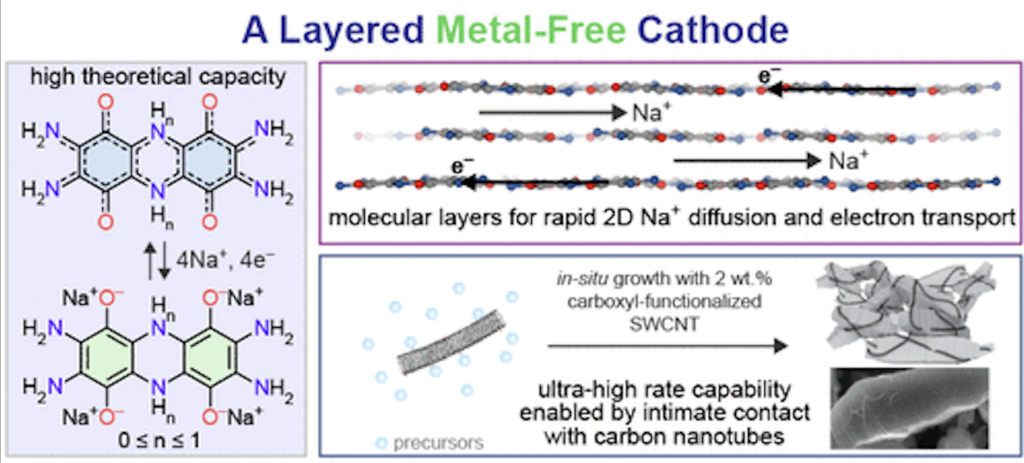Princeton: Dincă Lab demonstates high-performance Sodium-ion cathode for new battery technology
https://chemistry.princeton.edu/news/dinca-lab-researchers-demonstrate-high-performance-sodium-ion-cathode-towards-new-battery-technology/Dincă Lab demonstates high-performance Sodium-ion cathode for new battery technology
Research Highlights - Tuesday, Feb. 18, 2025 - By Wendy Plump
 Graphic courtesy of the Dincă Group.
Graphic courtesy of the Dincă Group.
For decades, scientists have sought ways to counter our dependence on lithium-ion batteries. These traditional, rechargeable batteries energize today’s most ubiquitous consumer electronics – from laptops to cell phones to electric cars. But raw lithium is expensive and is often sourced through fragile geopolitical networks.
This month, the Dincă Group announces an exciting alternative that relies on an organic, high-energy cathode material to make sodium-ion batteries, advancing the likelihood that this technology will find commercialization with safe, cheaper, more sustainable components.
While scientists have made some progress with sodium-ion batteries, hurdles arise largely because of their low energy density: they have shorter battery-run times relative to their size. High power density, which relates to output, also factors into their performance. Achieving high energy density and high power density simultaneously has been an ongoing challenge for alternative batteries.
…
“Energy density is something on a lot of people’s minds because you can equate it with how much juice you get in a battery. The more energy density you have, the farther your car goes before you have to recharge it. We’ve answered quite emphatically that the new material we developed has the largest energy density, certainly on a per kilogram basis, and competes with the best materials out there even on a volumetric basis.
…
https://doi.org/10.1021/jacs.4c17713
